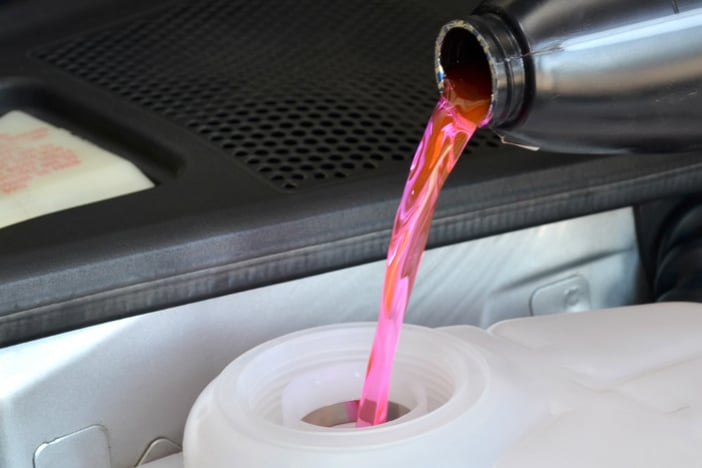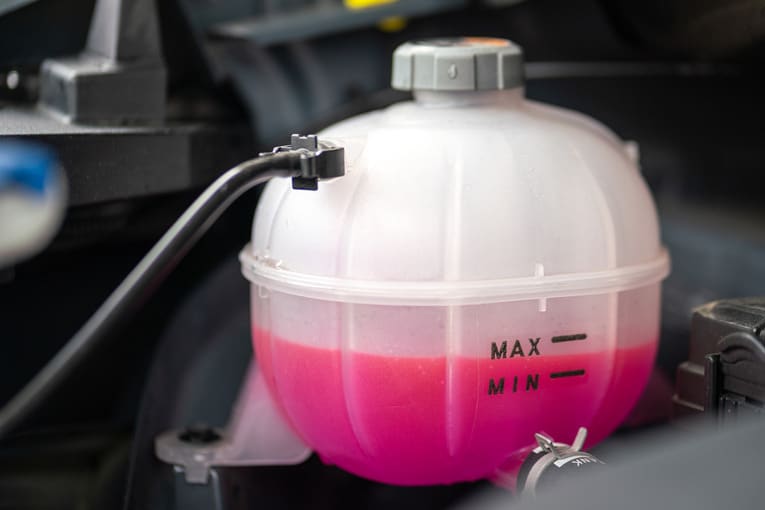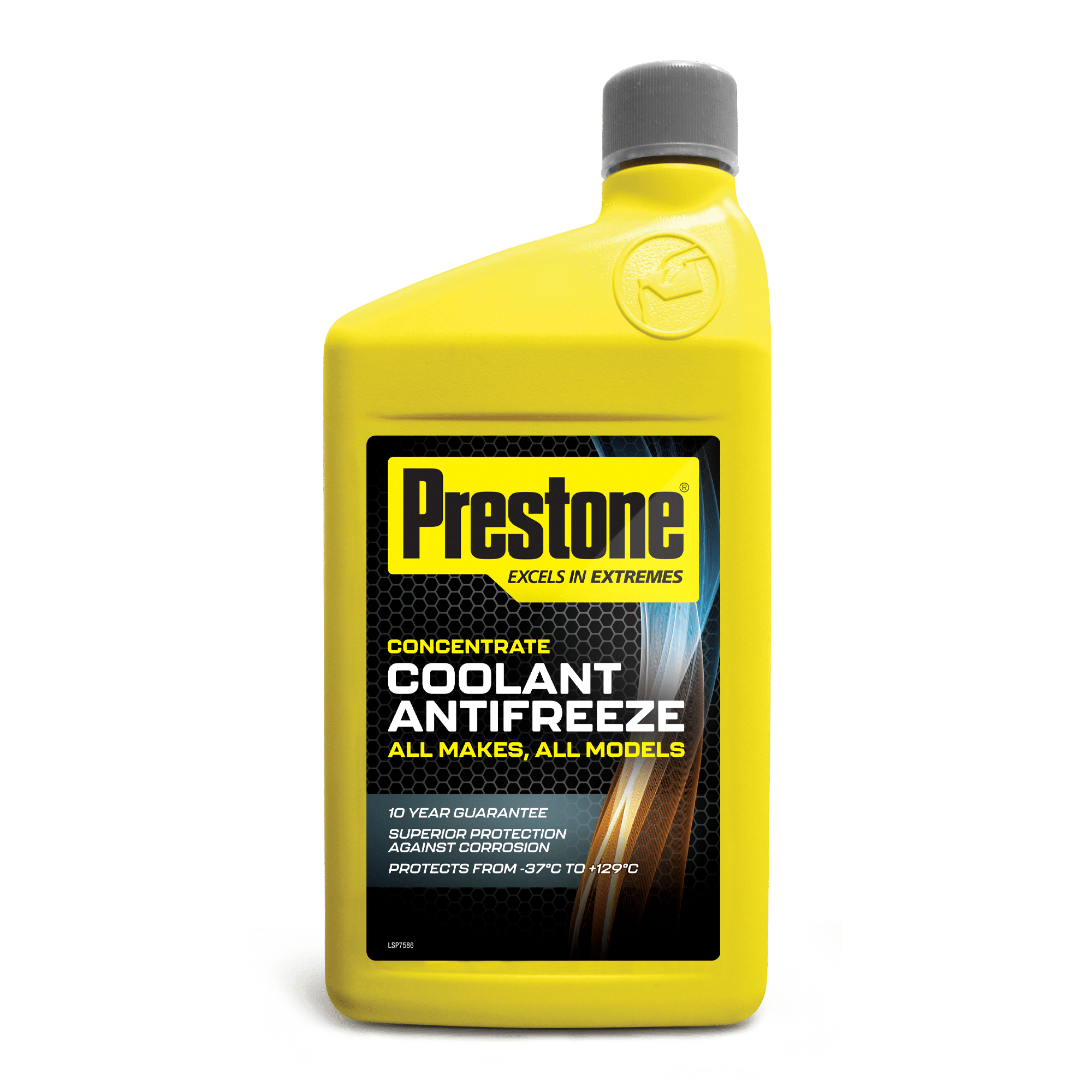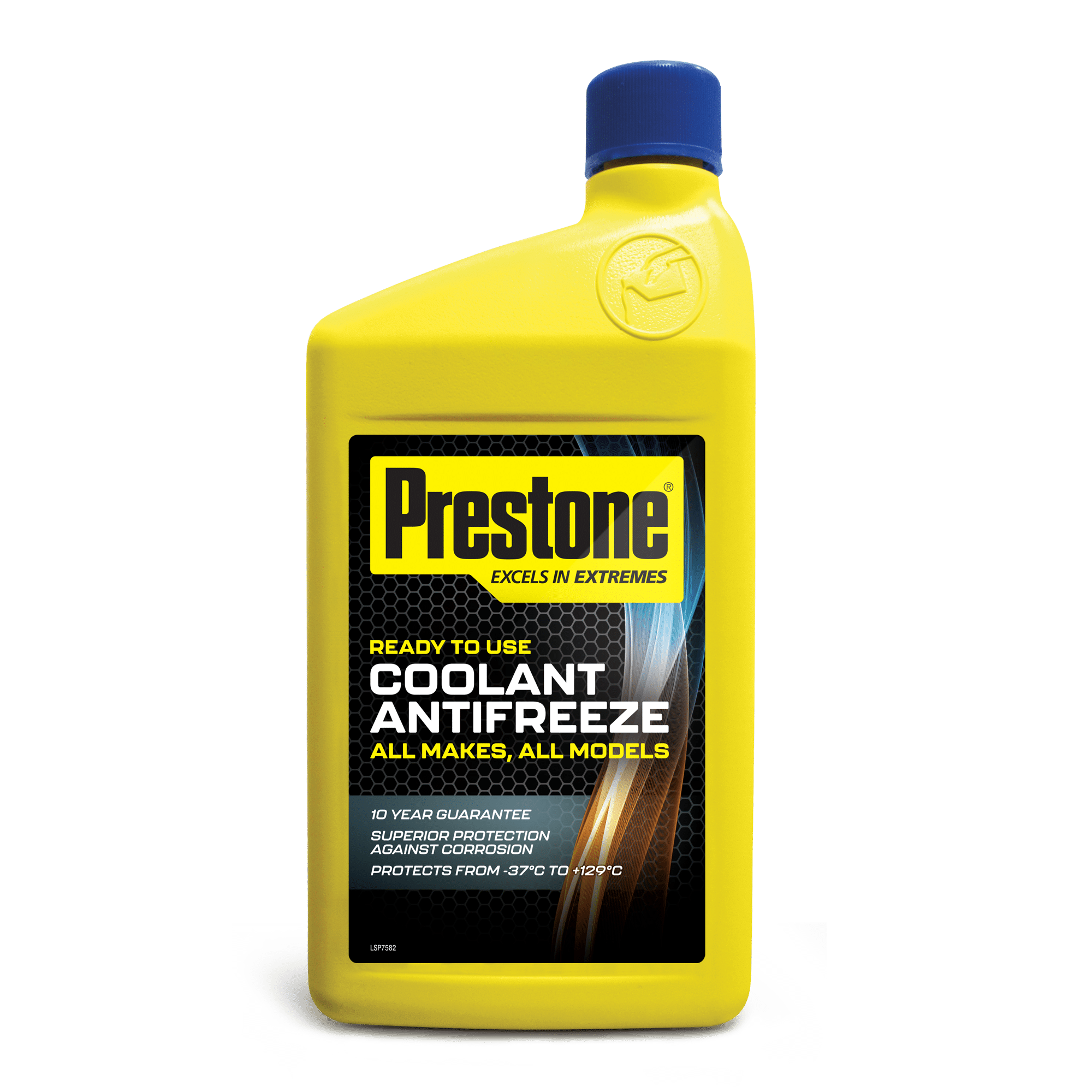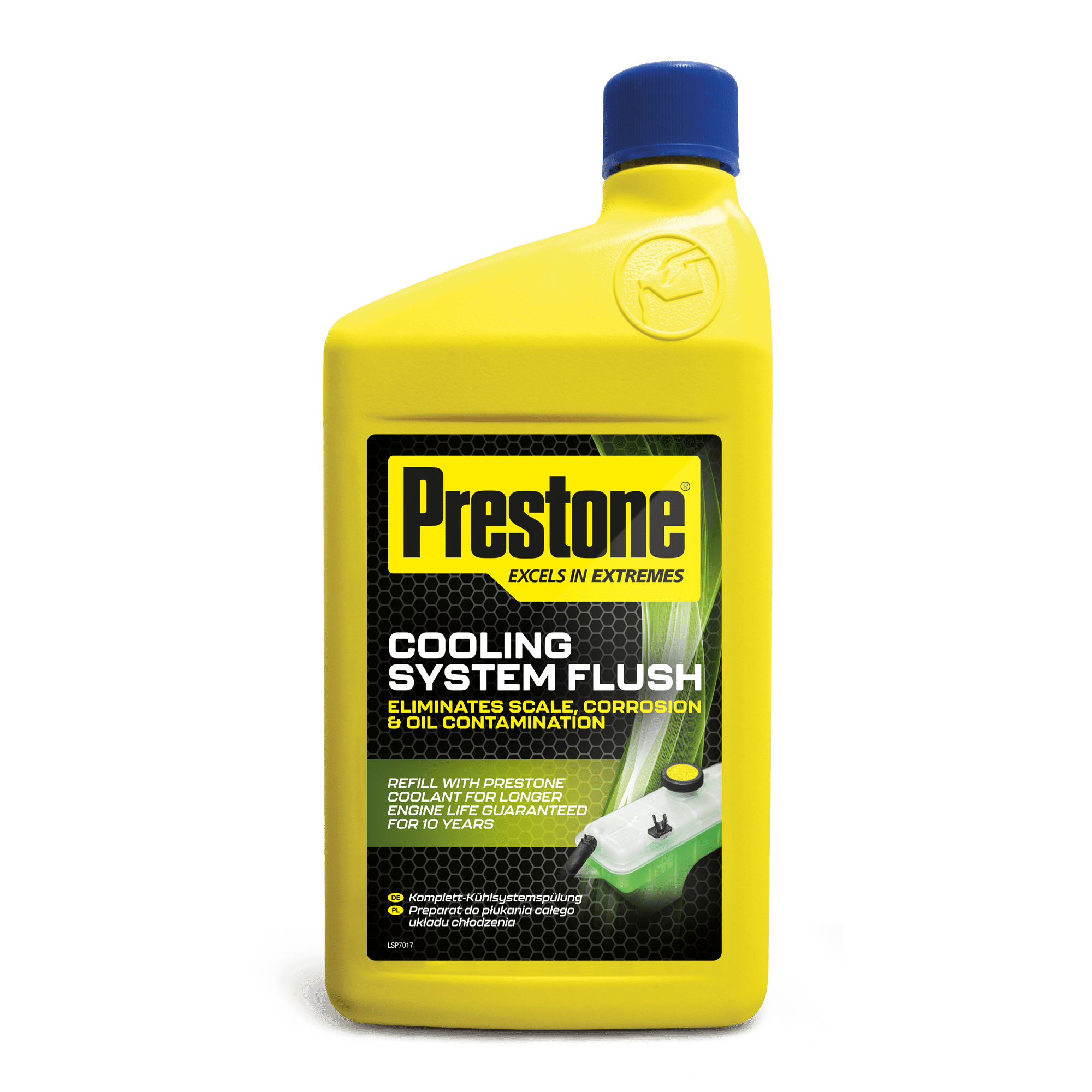Have you ever wondered how pink, orange, blue and green engine coolants differ from each other? Perhaps you’ve bought a car, checked the coolant/antifreeze reservoir for the first time and noticed it’s different from your last car. If so, you might be wondering which you should use if you need to top up?
The colour of engine coolant isn’t there to make it look pretty. There are historical reasons why it comes in different colours, but these days it doesn’t necessarily tell you all that much.
However, it’s important to make sure you’re putting the right fluid in your car, so here we’ll give you some insight into the differences. We also look at some of the advantages of using high-performance coolant/antifreeze, so you can make a more informed decision on the product that’s right for you.
Quick Links
- Why is Coolant/Antifreeze Different Colours?
- What Do Coolant/Antifreeze Colours Mean?
- Which Coolant/Antifreeze Should I Use in My Car?
Why is Coolant/Antifreeze Different Colours?
Vehicle fluids vary in colour from bright pink to reddish-brown, so if you ever need help identifying which is which, take a look at our car fluid finder chart.
As for coolant/antifreeze, there are a couple of key differences as to why some products are one colour and others are another. Unfortunately, it’s no longer possible to determine a specific type of coolant from its colour alone, as the shade has little bearing on the chemical make-up of the product. As such, great care should be taken when topping up your car’s cooling system.
It wasn’t always this way, though. As our expert, Bruce Ellis, explains: “In days gone by, the colour of coolant was determined by the type of chemicals used to prevent corrosion — meaning you could tell a lot about the type of coolant used by its colour.
“Older coolants that used Inorganic Additive Technology (IAT) were usually blue or green in colour. With these types of coolants, you’d normally have to change them every two years, or every 60,000 miles.
“Next came Organic Acid Technology (OAT) coolants, whose chemical make-up offered better protection for cooling systems, and extended the life of the coolant. These ‘Extended Life Coolants’ (ELC), were usually orange in colour and offered a five-year or 100,000-mile change interval. They could be a blend of IAT and OAT chemicals, and were therefore named ‘Hybrids’.
“These days, there’s no real reason for a coolant manufacturer to use a certain colour, so it’s not easy for you to know what chemicals are in the coolant just by seeing whether it’s blue, green, yellow or orange.
“That’s why it’s so confusing – you can open up the bonnet of a new car and have no idea what the coolant is based on. Similarly, if you buy a second-hand car, the colour of the coolant gives you no idea as to when it needs to be changed.”
Do I Need to Use a Certain Colour of Coolant in My Car?
If you need to refill your car’s cooling system, you should always check the manual first to find out which type of product is recommended by the manufacturer. But what about topping up the system when there’s coolant in the tank? Do you need to use a coolant of the same colour?
The answer to this is a firm ‘no’. Because coolants are no longer classified by colour, it’s impossible to tell if two products will mix safely within the system. Get it wrong, and it could cause a blockage that will wreck the cooling system and lead to significant repair bills.
On the issue of topping up your cooling system, Bruce advises: “Say you buy a second-hand car and it has pink coolant in it. You can see from the service record that it has had a coolant service within the last two years. But is it aftermarket or OEM spec? Will it last for two years or longer?
“The best thing to do when you aren’t sure what kind of coolant/antifreeze is in your car is to use a universal coolant that’s safe to mix with other fluids. Some premium coolant/antifreeze, like Prestone, can be safely mixed with other types of coolant, so you get peace of mind that the products will work safely without causing any problems within the cooling system.”
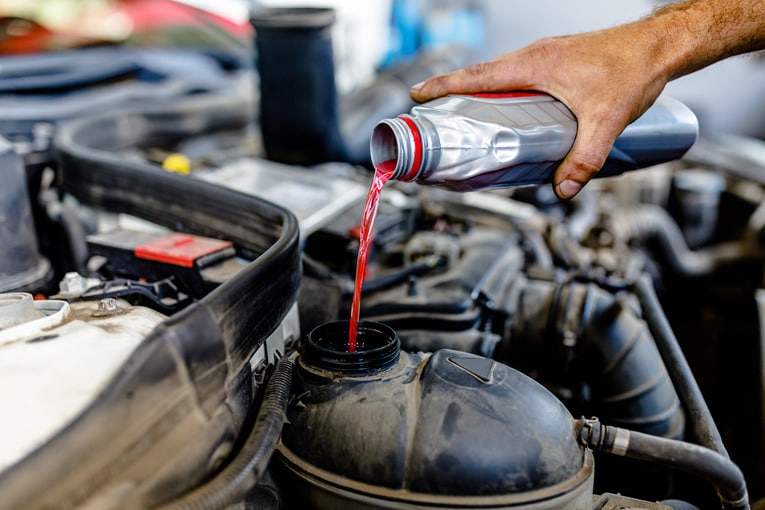
What Do Coolant/Antifreeze Colours Mean?
While we would never recommend choosing coolant based on colour, it is interesting to know what the different colours mean in a broad sense. Remember, always check your car’s manual when buying coolant or opt for a high-quality universal variant.
The main coolant colours are:
Green and Blue
Green and blue traditionally represented Inorganic Additive Technology (IAT) coolants. This is generally considered an out-dated type of coolant that contained phosphates and silicates, and required changing every two years on average.
Orange and Red
Orange and red coolants were usually classed as Extended Life Coolants (ELC), and offered a longer change interval than IAT variants, generally up to five years or 100,000. They used corrosion inhibitors and antimicrobial agents to slow wear and tear and offer greater protection for the engine.
Other Coolant/Antifreeze Colours
While yellow, blue, orange and red are the most common coolant/antifreeze colours, you may encounter others, including purple, pink and turquoise. These colours may be associated with different chemical compounds, like Hybrid Organic Acid Technology (HOAT) phosphate coolant, but as outlined above, the colour needn’t have any bearing on the make-up of the fluid itself.
Which Coolant/Antifreeze Should I Use in My Car?
Always use the coolant/antifreeze recommended by your car’s manufacturer, as this will guarantee the best performance and protection for the engine.
You’ll find information on suggested coolant blends in your car’s manual or online through owner’s forums or your manufacturer’s official website. If you need to top up your car’s coolant/antifreeze but aren’t sure what type of coolant is currently in the system, use a premium universal coolant to ensure safe mixing and optimal performance.
Prestone Coolant/Antifreeze is guaranteed for all makes and models, and provides outstanding protection for up to 10 years. So if you’re concerned about putting the right coolant/antifreeze in your car, cut the stress and reach for Prestone.
At Prestone we’re experts in car maintenance fluids that excel in extremes, including coolant/antifreeze, screen wash and de-icer. For more information or to browse our full product range, visit the homepage today.
